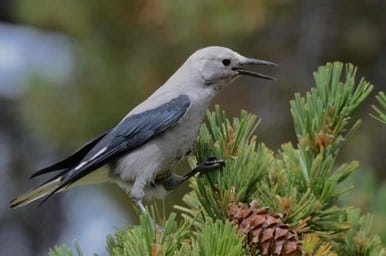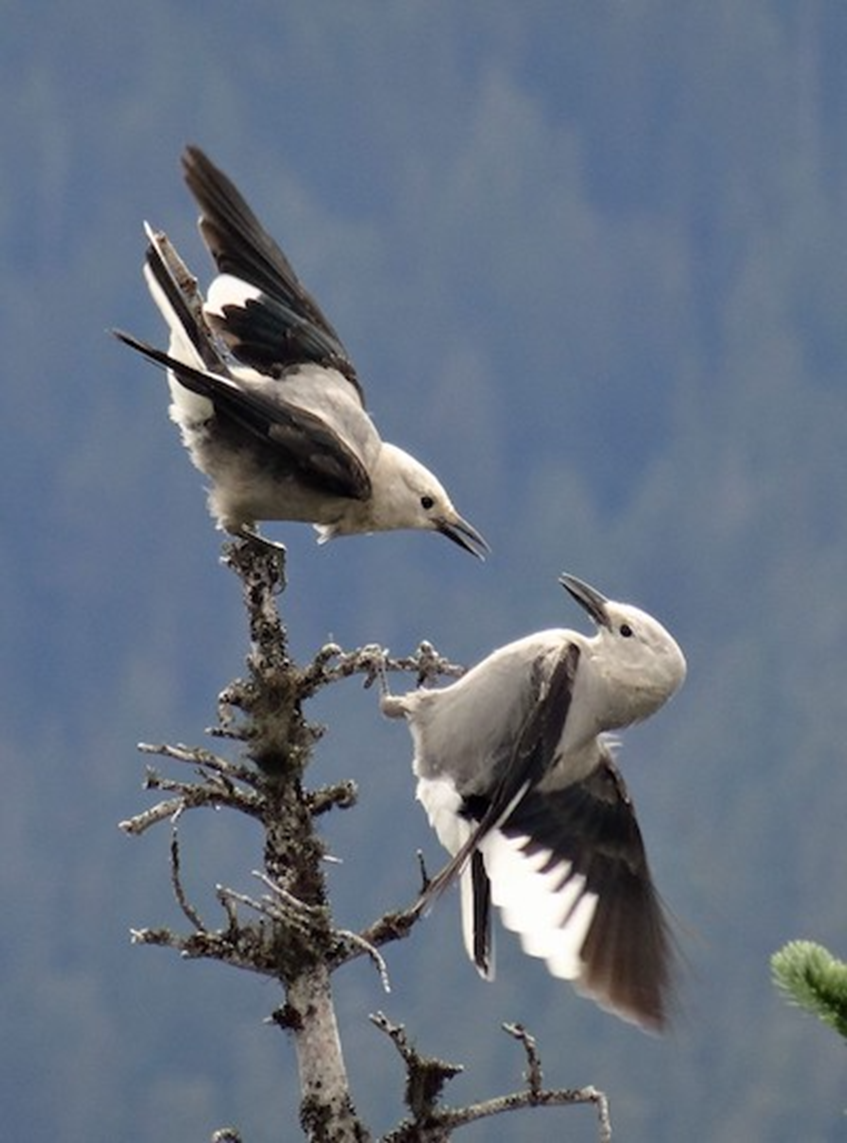…and a raucous voice
Before I reached the age of 30, I had to stop carrying a wallet. I just couldn’t keep track of it, and I found myself having to cancel credit cards and replace IDs with dismaying regularity. One memorable night, I was awakened at midnight by the local police who wanted to talk to me in the foyer of my college dorm. When they asked me if I’d lost my wallet, I was baffled, not having noticed its absence. They informed me that it had been found in the men’s room of a local McDonald’s. That time, it must have been taken from me, but I had only myself to blame when I left it, several years later, in a restroom in Guatemala. Being all too aware of the limitations of my own brain and my inability to keep track of a wallet (and now a cell phone!), I therefore find it especially amusing when people disparagingly refer to someone as being a “bird brain,” because I’m quite sure that if I had an avian brain, I might never lose anything again.
Glancing out my kitchen window, I see one of the big-brained birds that I admire the most, lowering itself into my bird bath, and shivering its wings to soak its elegant plumage. The Clark’s Nutcracker—a member of the corvid family, which includes ravens, crows, jays, and nutcrackers—is a striking gray-brown bird with a powerful bill and flashy black-and-white wings and tail. Each summer and fall, the nutcracker extracts seeds from pinecones, stashes 30 to 150 of them at a time in a special pouch under its tongue, and carries them as far as 20 miles to various caching sites. Digging small holes in the soil with its bill, this montane bird of western North America deposits and buries small clusters of seeds, which it will later recover to feed itself and its nestlings. The nutcracker can cache anywhere from an estimated 32,000 to 98,000 seeds each year! And it can relocate most of these seeds up to 10 months later, sometimes even digging through snow to find them.
Over the years, a series of ingenious studies revealed that the birds have an extraordinary spatial memory, keying into the locations of their hidden seeds by remembering where their caches are in relation to landmarks such as boulders and shrubs. When a researcher moved all the landmarks he’d placed in an aviary 8 inches to the right after two captive nutcrackers had made scores of caches, the birds searched for their hidden seeds by digging several inches to the right of where they’d buried them.
The birds typically hide more seeds than they can eat and those they don’t recover often grow into new pine trees. Over the eons, most whitebark pines—a high-elevation western conifer—grew from seeds that had been “planted” by Clark’s Nutcrackers, its main seed disperser. Now, this high-country bird is the threatened whitebark pine’s best hope for recovering from the devastation wrought by an introduced fungus that has killed millions of the trees. The US Forest Service and its allies have planted millions of whitebark pine seedlings that have been engineered to resist the blister rust fungus, but they are depending on the nutcracker to spread seeds far beyond their restoration areas. This iconic bird is literally the key to saving a tree that anchors an entire montane ecosystem, feeding wildlife from grizzly bears to squirrels, reducing soil erosion, facilitating forest recovery after fires, and regulating runoff by shading snow so that it melts more slowly.
Living at 4,000 feet on my Montana property, I hadn’t expected to count Clark’s Nutcrackers among my “yard birds.” And yet this avian superhero is a regular visitor to my bird bath, feeds on the ponderosa pines around my home, and indulges on the suet that I put out for it. Anyone who has hiked in the Mountain West has likely been accompanied by the nutcracker’s unmistakable, grating graaack graack soundtrack. Like the ethereal thrushes of the eastern forests and the Canyon Wren of the Desert Southwest, the Clark’s Nutcracker is the iconic—albeit unmusical—voice of the western mountains. And after my years of working in habitats across the Americas, the Clark’s unforgettably raucous voice is a constant reminder that I’ve finally found my way back to the mountain country I call home.
Take a small step to help birds
It’s easy to feel helpless in the face of habitat destruction and disappearing wildlife. But according to the US Fish and Wildlife Service, over 96 million people in North America watch birds. If each of us does something to help them, we may be able to reverse declining bird numbers.
Here are a few things you can do:
Although Clark’s Nutcrackers feed largely on pine seeds, they are opportunistic and will also feed on insects, small vertebrates, and carrion. Hunting with non-lead ammunition, which doesn’t fragment into tiny particles the way lead ammunition does when it’s shot into an animal, protects eagles, condors, ravens, nutcrackers, magpies, and other scavengers that inadvertently ingest lead when feeding on the remains of hunter-killed animals. Hunting with non-lead ammunition also protects human hunters from the devastating health consequences of ingesting lead.
By tolerating a little mess in your yard (if you have one) this fall, you’ll help insects and the many bird species that depend on them. Rather than bagging up and disposing of fallen leaves, consider leaving some in place or blowing them to the periphery of your yard so they can provide shelter for overwintering insects. If you leave your flower gardens as they are, rather than cutting them back, you’ll protect hidden insects and their eggs. If you prefer cutting back your gardens each fall, deposit the cuttings in a brush pile so that insects that are hiding inside the plants and insect eggs that have been laid in them can emerge in the spring.
Many of “our” summer birds are now wintering in tropical habitats. Consider buying shade-grown coffee to help our migratory birds. Sun-grown coffee is planted on cleared land, is often treated with pesticides, and does not harbor much birdlife. But coffee that is grown under a partial canopy of trees (shade-grown coffee) provides habitat that sustains both migratory and local birds.
Thank you for reading and thanks for all you do to help birds!
Until next time …
P.S. If you’d like to read about another vital seed disperser and the voice of the Hawaiian cloud forest—the critically endangered ‘Alalā—check out my new book Feather Trails—A Journey of Discovery Among Endangered Birds.






And now, "montane" is added to my vocabulary. And until today, I had not put together any familial link between crows and blue jays, but man does it make sense!
After the big wildfires in the Bitterroot Valley in 2000, Clark's Nutcrackers were already busy caching (planting) seeds as the ground still smoldered. The same happened in an area of a prescribed burn that I often hike through--dozens of nutcrackers hiding their seeds, planting the next generation of pines. I love to stand under the canopy of a pine forest with nutcrackers and crossbills opening cones above me, the empty wings of the seeds raining softly down on my head.